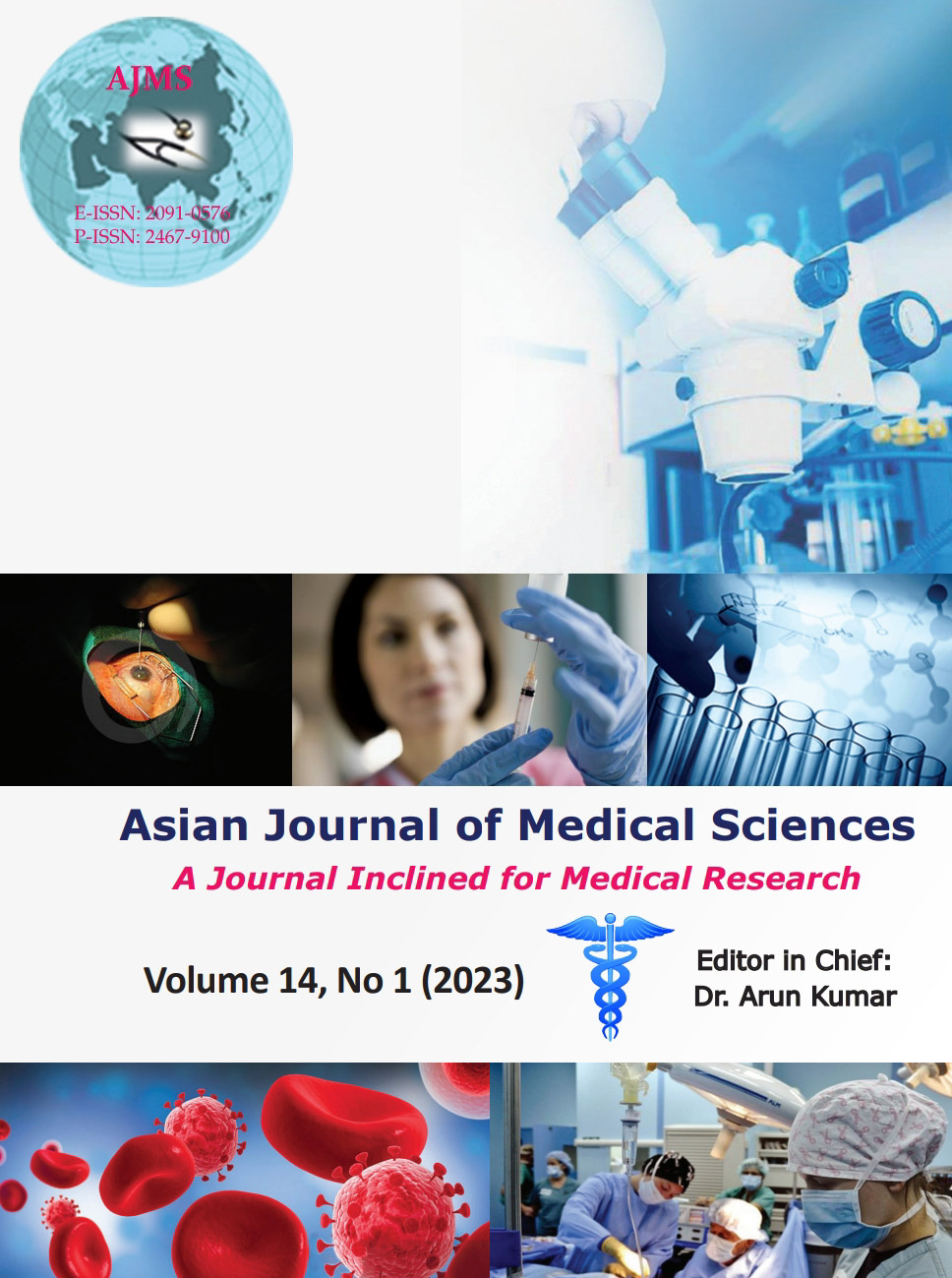Tuberculosis and HIV coinfection and rifampicin-resistant tuberculosis among patients living with HIV in Northern part of West Bengal, India
Keywords:
Tuberculosis; HIV; Co-infection; RifampicinAbstract
Background: India is one of the top most country among the high tuberculosis (TB) burden countries and ranks the third highest human immunodeficiency virus (HIV) burden country in the world contributing to 23% of the total global load. Mycobacterium tuberculosis (MTB) and HIV are known to act synergistically and result in higher mortality rates. TB-HIV coinfection and emergence of drug resistant forms of MTB can impact positively on treatment outcomes.
Aims and Objectives: The aim of this study was to determine of the prevalence of TB-HIV co-infection among MTB and to determine the prevalence of rifampicin (RIF) resistant TB among HIV seropositive patients.
Materials and Methods: It was a retrospective and observational study carried out in the Department of Microbiology, Malda Medical College, Malda, West Bengal. Records of all patients that tested using CBNAAT during March 2016–December 2019 in the CBNAAT laboratory of Malda Medical College were assessed. Data generated during this period were collected and analyzed. The statistical analysis was done in tabulation form and different charts and tables were used for displaying data.
Results: A total of 6503 samples were tested in CBNAAT laboratory during March 2016–December 2019. Out of 6503, 3098 samples were positive for CBNAAT (MTB detected).Of 3098 MTB, 8.91% (276/3098) were RIF resistant. Among 3098 MTB, 91.22% (2826/3098) were pulmonary TB (PTB) and 8.78% (272/3098) were extra PTB. Out of 6503 total samples, 664 were reported patients living with HIV. The prevalence of TB-HIV coinfection was 3.91% (121/3098) among MTB positive cases. Of all TB-HIV coinfected cases, most of the patients (67.77%) were in the age group of 20–39 years and males (77.69%) contributed to more than females. Of 121 TB-HIV coinfected, 88.43% (107/121) were sensitive to RIF and 11.57% (14/121) were resistant to RIF.
Conclusion: The present study reported that the prevalence of TB-HIV coinfection was 3.91% and the prevalence of RIF resistant TB in HIV seropositive patients was higher than HIV seronegative patients. Thus, all TB patients should be screened for HIV and all HIV-positive individuals should be screened for TB along with drug resistance for better management.
Downloads
Downloads
Published
How to Cite
Issue
Section
License
Copyright (c) 2022 Asian Journal of Medical Sciences

This work is licensed under a Creative Commons Attribution-NonCommercial 4.0 International License.
Authors who publish with this journal agree to the following terms:
- The journal holds copyright and publishes the work under a Creative Commons CC-BY-NC license that permits use, distribution and reprduction in any medium, provided the original work is properly cited and is not used for commercial purposes. The journal should be recognised as the original publisher of this work.
- Authors are able to enter into separate, additional contractual arrangements for the non-exclusive distribution of the journal's published version of the work (e.g., post it to an institutional repository or publish it in a book), with an acknowledgement of its initial publication in this journal.
- Authors are permitted and encouraged to post their work online (e.g., in institutional repositories or on their website) prior to and during the submission process, as it can lead to productive exchanges, as well as earlier and greater citation of published work (See The Effect of Open Access).




